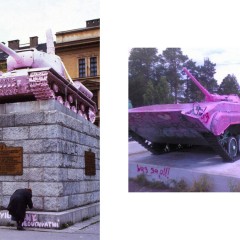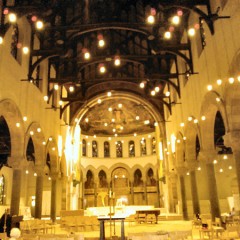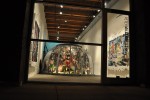Hi there, I’m back. This week’s Weekly has my review of Drexel University’s Inter_Logic. Below is the copy with pictures and here’s the link to the art page.
Never Mind the Pollocks
“Inter_Logic” asks: Where’s Waldo today?
“Inter_Logic” at Drexel’s Pearlstein Gallery is an ambitious group show questioning the meaning of landscape today. Since many of us get our landscape served up photographically and digitally enhanced, “how green is my valley” takes on new meaning.
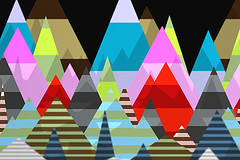
Lee Arnold Alpinia, a rock-candy mountain-scape that’s more threatening than it looks.
The six artists in this exhibit—three local, two from New York and one from the West Coast—use a variety of materials and approaches. While you won’t see many traditional scenes of mountains or farms, that’s not our world today anyway.
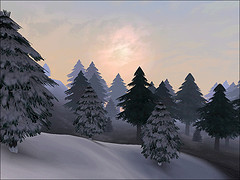
Bruce Conkle Partial Cover. The piece is made from a video game landscape. Look at it in its original size to see how exquisitely fake it is.
Instead these artists serve up micro-universes, specimens and extreme digital environments that take a dark and playful look at those faux realities that come to us via surveillance cameras, maps, microscopes, the Internet and video games. The entire show questions the seductive charms of image-making at a time when our grasp of what’s real seems to be slipping.

Mark Campbell’s clusters of housing stock evoke the urban landscape gone crazy
Mark Campbell‘s sculptural aggregations of tiny housing units are a reminder that most of us live in the urban, suburban or ex-urban landscape. These micro-environments are anxiety-producing works—impossible congestions of unplanned over-building. (Row House) Accretion and Cluster Study seem to be growing like a biological organism-behaving-badly—like a cancer on the land.
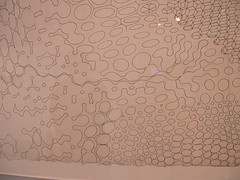
Bruce Pollock’s drawings are microscopic universes with order and great disorder. Pollock’s got a solo show at Fleisher-Ollman Gallery up until Dec. 9.
Bruce Pollock‘s intricate and detailed pencil-and-ink drawings also reflect scientific landscapes. Pollock’s honeycombs and cell clusters are like microscopic dissections, and whether they’re of human groups, plants or the cosmos isn’t clear. Even though they too suggest that excess can lead to bad things, Pollock’s works are more of a celebration than Campbell’s.
The candy-colored and beautiful digital animations by New York artist and Drexel faculty Lee Arnold are by turns childlike and surreal. Alpinia—a colorful mountaintop scene that apes the look of mountains drawn by a 4-year-old—has a soundtrack of children’s voices laughing in the hills. But as the piece progresses and the mountains throw dark shadows on each other and begin to feel like beautiful killers instead of candy, the children’s voices, on second thought, might be screams of fear.
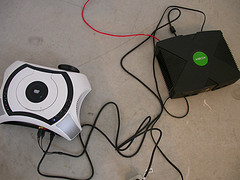
Lance Wakeling’s Xbox with new programming visits internet sites and beams back postcards
Lance Wakeling‘s piece deals with the Internet as a space. We call it cyberspace, and it is a landscape of sorts. You can’t go horizontally or vertically in cyberspace, but you can go deep—layers deep, so deep you completely lose your bearings and feel like you’re down Alice’s rabbit hole. Wakeling’s inserted a Linux Wget program into the shell of an XBox, and the program trolls the ‘Net and mines it site by site, projecting every image on the wall. The rabbit hole is impossible to diagram, and yet the images it throws up—postcards from the site “visits”—are as valid as postcards you pick up on vacation.
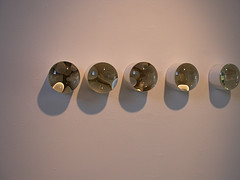
Julie York’s specimen-like inner spaces
Julie York‘s eerie porcelain specimens and Bruce Conkle‘s faux landscapes made from video games round out the excellent show.
These artists have used very different means from the Hudson River School painters to express their feelings about themselves and the world. That they’ve used the metaphor of landscape to portray hope, fear and questions about humankind shows how potent landscapes can be as messengers, even today.
“Inter_Logic”
Through Dec. 15. Leonard Pearlstein Gallery, Drexel University, Nesbitt Hall, 33rd and Market sts. 215.895.2548.



